The Trail of Tears: Fort Payne Alabama Historic Cabin Site
Explore Fort Payne, Alabama, a critical site in the Trail of Tears, highlighting Native American history and resilience. Discover its significance today.
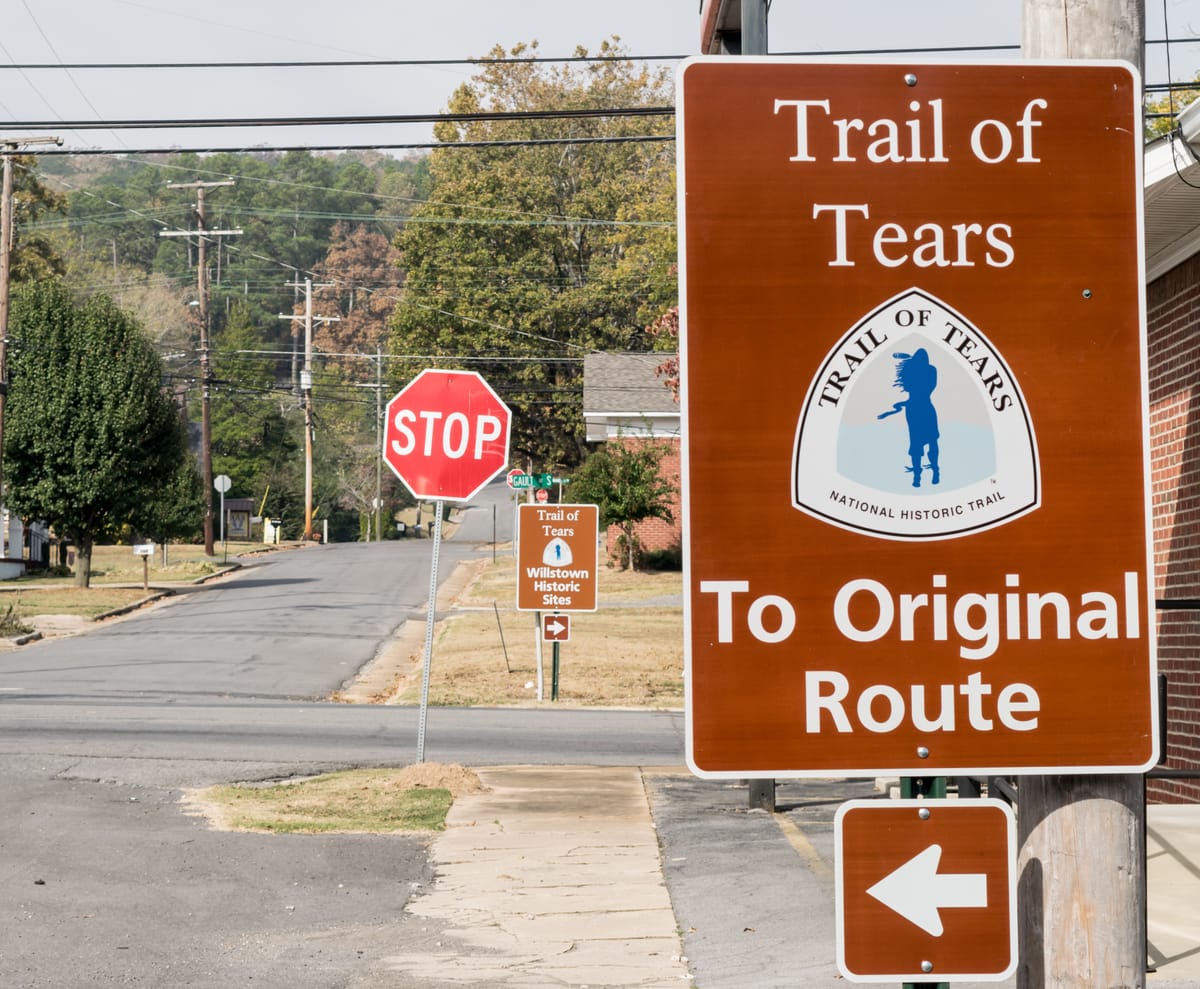
Native American Historical Sites Alabama – Destination One
Modern day Fort Payne, Alabama, is best known as home to the country music group “Alabama”. It is also a stopping point in the World’s Longest Yard Sale. However, in frontier days this area was known as Wills Town Mission. It now features designated stops on the National Historic Trail for the Trail of Tears.
Historical Significance of Fort Payne
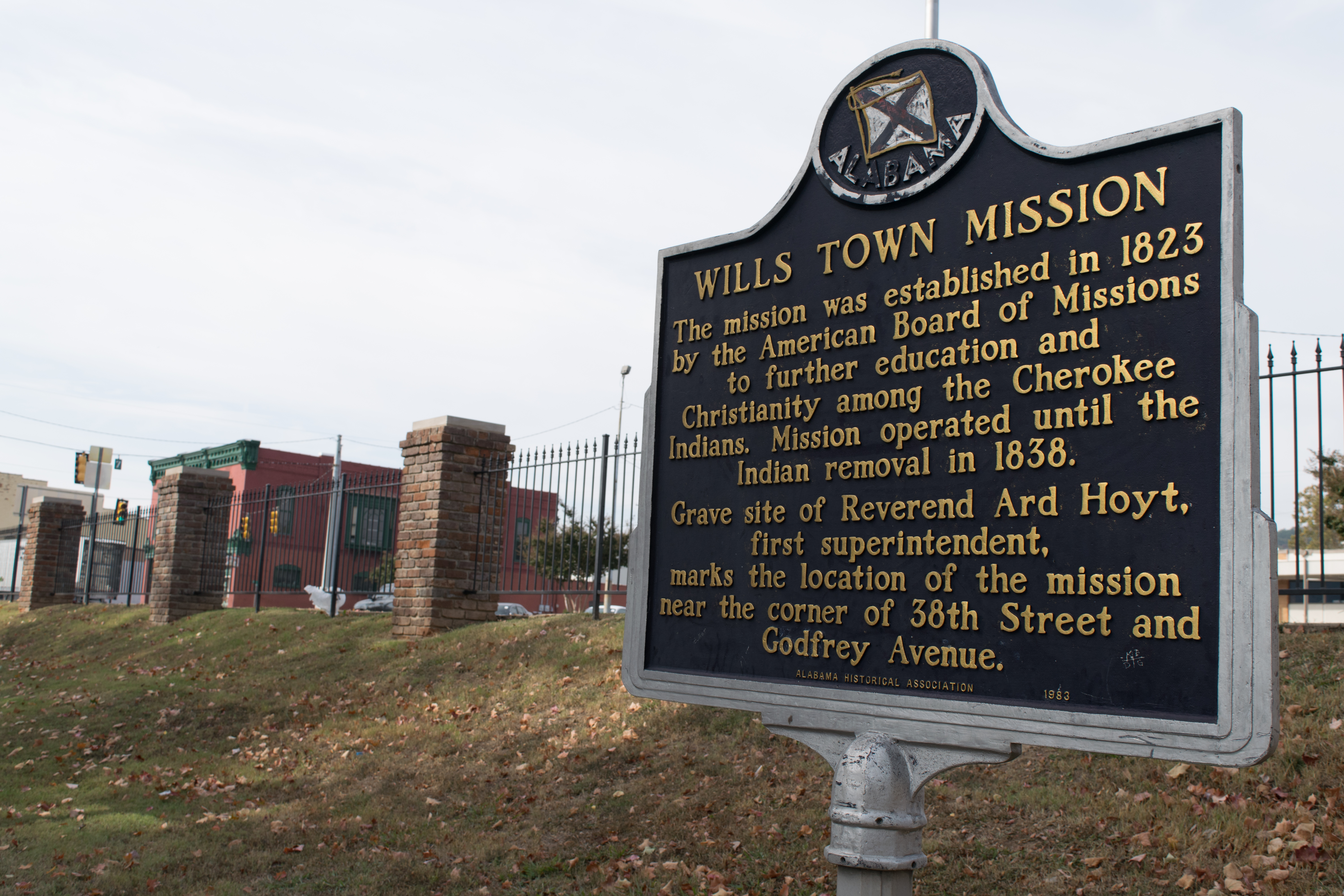
In 1838 Wills Town Mission found itself in the cross-hairs of conflict between the Cherokee Indians and the United States government. Tensions raged regarding the Indian Removal Act of 1830. This congressional law demanded that the five major tribes of Native Americans relocate their families to lands west of the Mississippi River.
Many complied with the congressional dictate and journeyed west in the years between 1830 and 1838. But the majority of the Cherokee tribe held firm. Therefore, Captain John G. Payne was dispatched to the area to establish orderly removal of the remaining tribal families. The log stockade and surrounding area became known as Fort Payne.
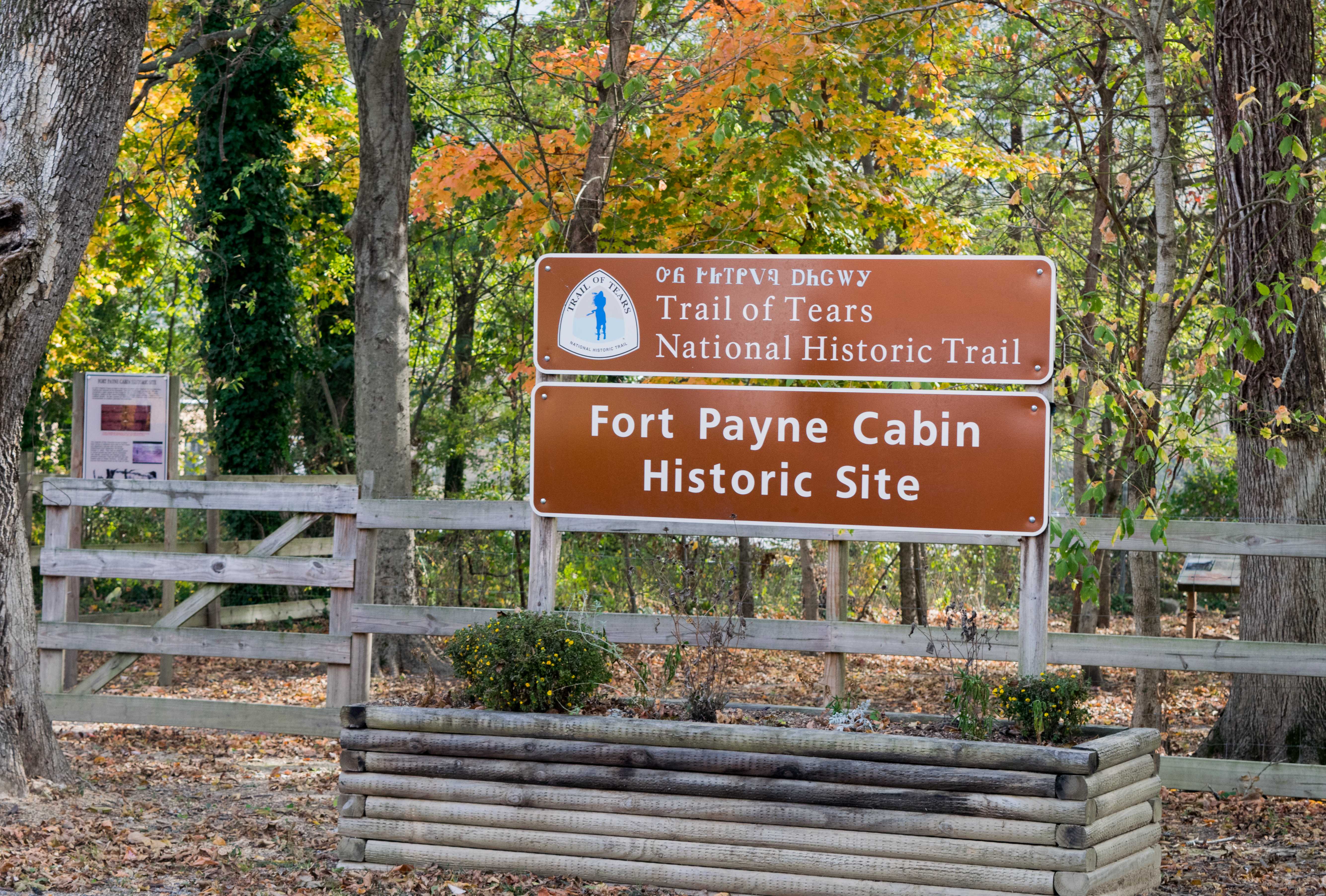
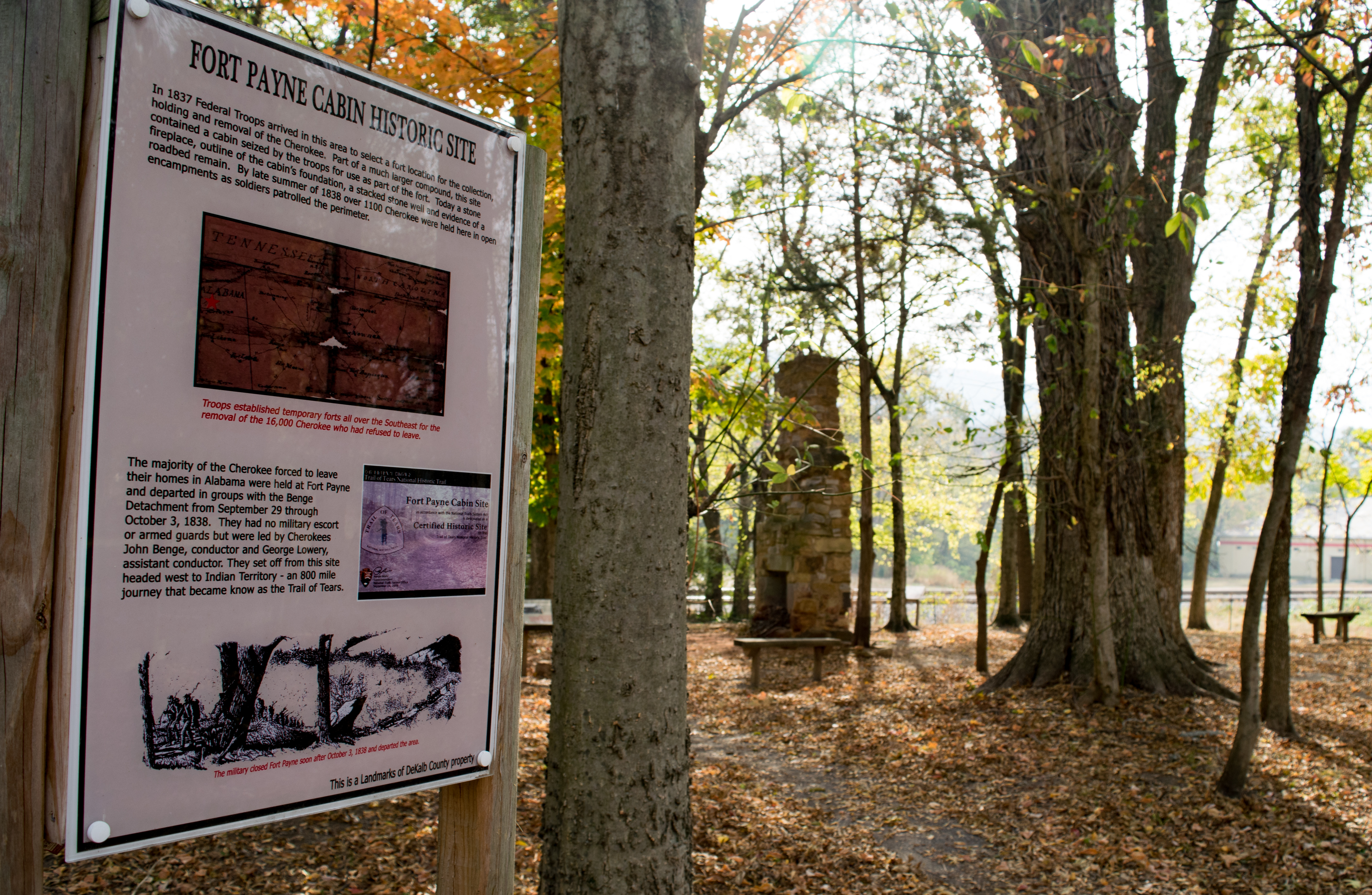
In Fort Payne, Alabama, at the end of 4th Street S.E., a wooden rail fence separates the Fort Payne Historic Cabin Site from the city streets and local businesses. Upon entering, information boards guide newcomers into the historical context of the area.
Commandeered by the militia forces, the frontier fort surrounded a two-story log home. An information board near the remaining chimney presents a photo of the home that belonged to Cherokee John Huss (Spirit the Preacher). Stones outline the cabin’s 18′ X 19′ exterior walls. A wooden bench provides seating for visitors to rest and contemplate this historic site.
The Trail of Tears Begins
The Reverend John Huss headed a voluntary departure group of 74 persons in November 1837, while the fort surrounding his former home was still under construction. Fort Payne was occupied by Alabama troops from April until October of 1838. In 1838 when the last major detachment of Indians departed. This fort had a singular purpose resulting in its abandonment in October 1838.
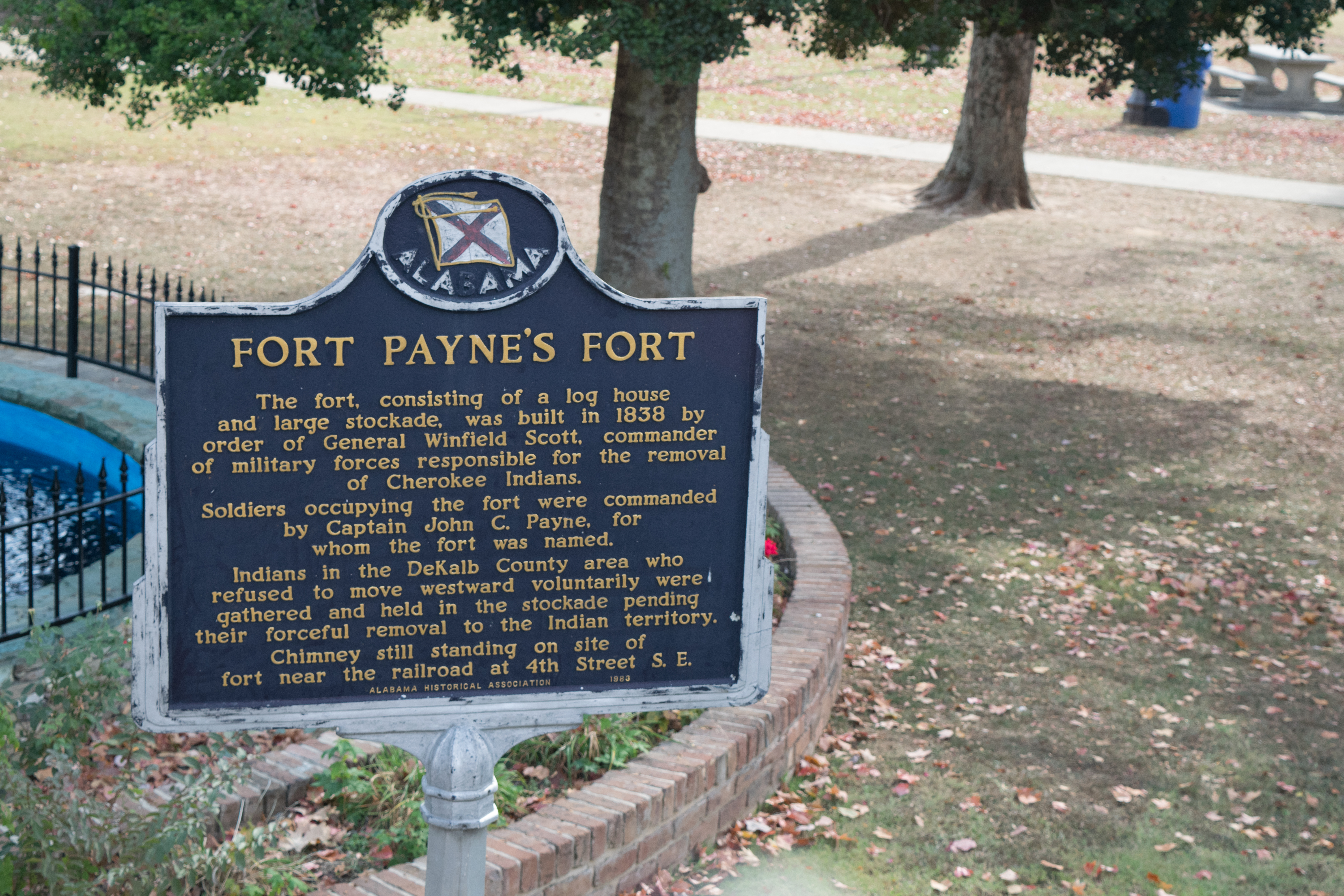
Near the gated entry to the site, an archaeological dig is in progress. A stacked-stone water well, once discovered and excavated, provided more information on the history of the area and the lifestyle of early inhabitants.
The forced Native American Indian relocation effort, known today as the “Trail of Tears”, produced immense hardships and loss of lives during the harsh winter of 1838. Indian families were transferred from their homes to internment camps at militia-controlled forts. Then led along rugged paths or shallow waterways to their final destinations.
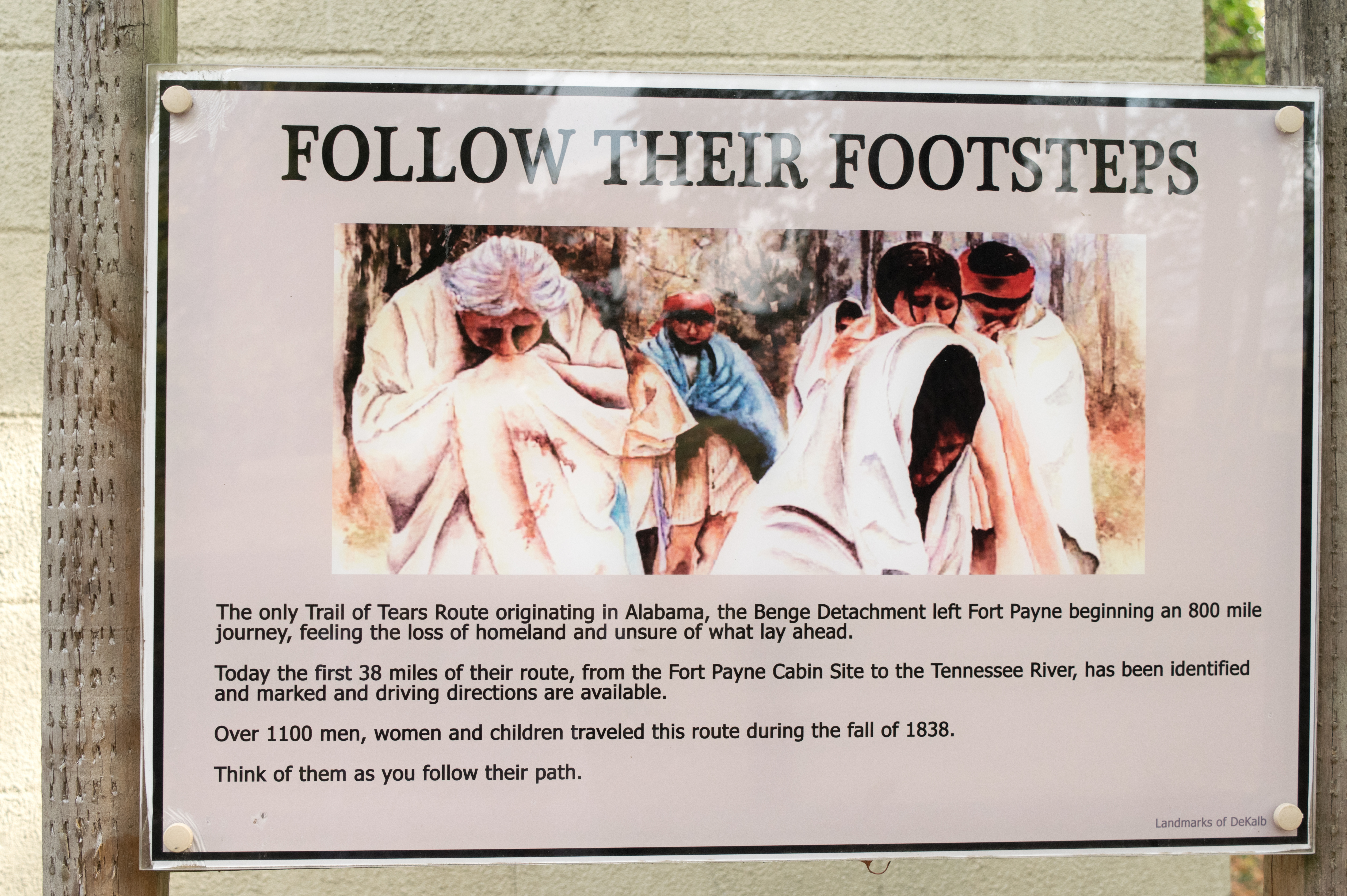
John Benge, a local Cherokee leader, led the last Fort Payne detachment. According to various accounts of the journey, more than 1,100 individuals began their foot journey in September 1838, from near Fort Payne.
Most of those departing were of Cherokee descent. However, the musters logs identified some Creek Indians and more than one hundred slaves. The Benge Detachment walked for about 100 days on a route that ended roughly 770 miles from their origination point. This group resettled in Oklahoma.
In 1987, the U.S. Congress designated the Trail of Tears National Historic Trail. The trail covers more than 2,000 miles. It stretches across nine states – Alabama, Arkansas, Georgia, Illinois, Kentucky, Missouri, North Carolina, Oklahoma, and Tennessee.
Follow Gwyn’s journey Native American Historical Sites in Alabama in her MilesGeek column, Small Towns, Big Cities.
Recommended Additional Reading
The best way to better understand the agreement that the Cherokees had with the U.S. Government prior to removal is to read the treaties.
These quotes from the Treaty of 1828, based on which many Cherokee families voluntarily relocated to Arkansas is very telling. Even those who voluntarily relocated to Arkansas during this time eventually relocated to Oklahoma Territory.
“ARTICLE 1.
WHEREAS, it being the anxious desire of the Government of the United States to secure to the Cherokee nation of Indians, as well those living within the limits of the Territory of Arkansas, as those of their friends and brothers who reside in States East of the Mississippi, and who may wish to join their brothers of the West, a permanent home, and which shall, under the most solemn guarantee of the United States, be, and remain, theirs forever…”
“ARTICLE 2.
The United States agree to possess the Cherokees, and to guarantee it to them forever, and that guarantee is hereby solemnly pledged, of seven millions of acres of land, to be bounded as follows, viz: Commencing at that point on Arkansas River where the Eastern Choctaw boundary line strikes said River, and running thence with the Western line of Arkansas, as defined in the foregoing article, to the South-West corner of Missouri, and thence with the Western boundary line of Missouri till it crosses the waters of Neasho, generally called Grand River, thence due West to a point from which a due South course will strike the present North West corner of Arkansas Territory, thence continuing due South, on and with the present Western boundary line of the Territory to the main branch of Arkansas River, thence down said River to its junction with the Canadian River, and thence up and between the said Rivers Arkansas and Canadian, to a point at which a line running North and South from River to River, will give the aforesaid seven millions of acres.
In addition to the seven millions of acres thus provided for, and bounded, the United States further guarantee to the Cherokee Nation a perpetual outlet, West, and a free and unmolested use of all the Country lying West of the Western boundary of the above described limits, and as far West as the sovereignty of the United States, and their right of soil extend.
ARTICLE 3.
The United States agree to have the lines of the above cession run without delay, say not later than the first of October next, and to remove, immediately after the running of the Eastern line from the Arkansas River to the South-West corner of Missouri, all white persons from the West to the East of said line, and also all others, should there be any there, who may be unacceptable to the Cherokees, so that no obstacles arising out of the presence of a white population, or a population of any other sort, shall exist to annoy the Cherokees— and also to keep all such from the West of said line in future.”




